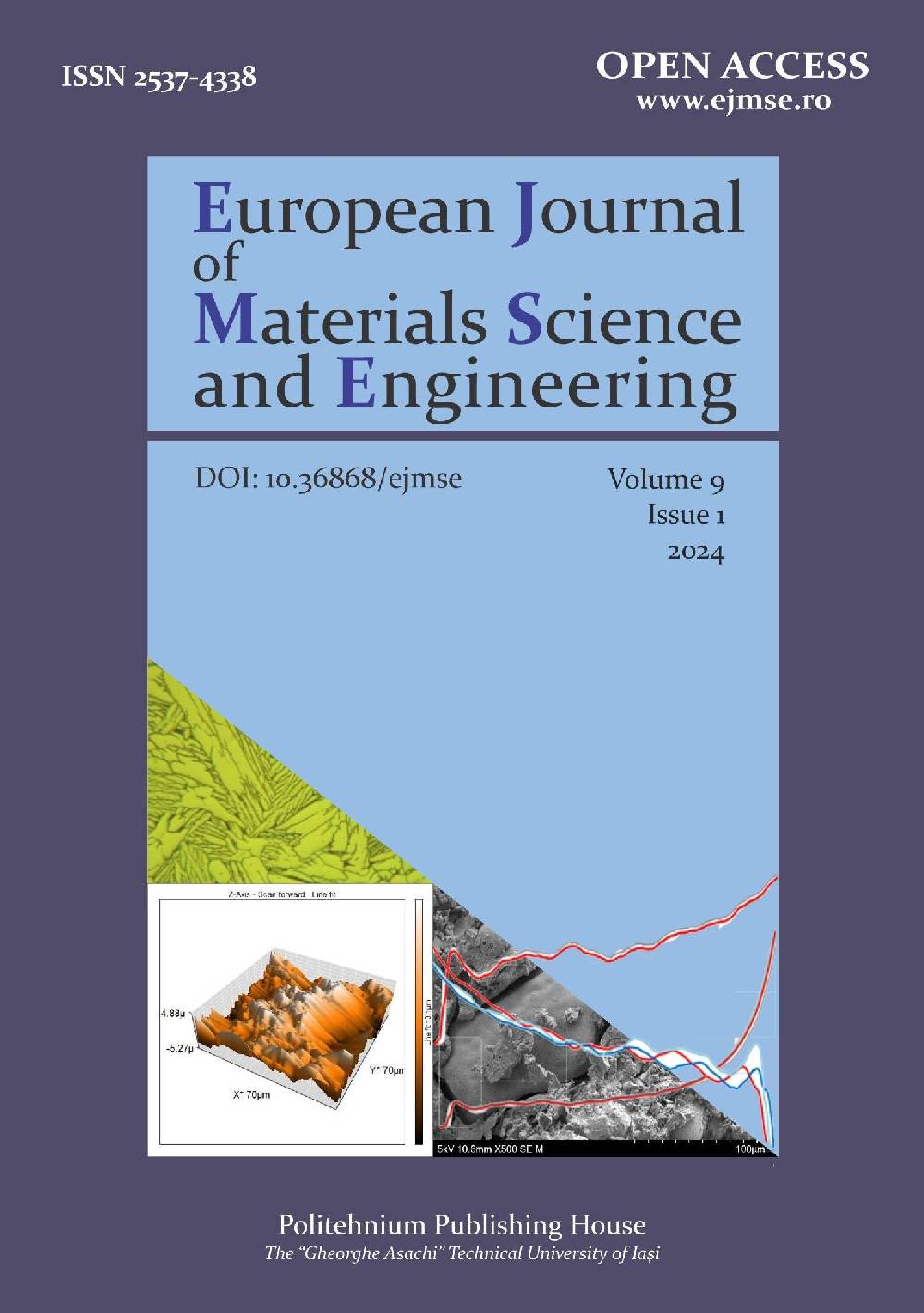THERMAL INSULATION OF BUILDINGS USING INNOVATIVE MATERIALS BASED ON NANOPARTICLES
European Journal of Materials Science and Engineering, Volume 9, Issue 1, 2024
PDF Full Article, DOI: 10.36868/ejmse.2024.09.01.065, pp. 65-74
Published: March 20, 2024
Tudor Panfil TOADER 1,*, Carmen DICO1, Anamaria Catalina MIRCEA1
1 NIRD URBAN-INCERC Cluj-Napoca Branch, 117 Calea Florești, 400524 Cluj-Napoca, Romania
* Corresponding author: tudor.toader@incerc-cluj.ro
Abstract
Nano Insulation is a liquid-consistency, colourable, paint-like thermal insulation material with many other beneficial properties in addition to insulation. It is a material that can be used both indoors and outdoors in industrial, civil and other types of constructions. Compared to conventional insulation materials, this photocatalytic system is beneficial for internal and external air purification and uses nanotechnology with Titanium Dioxide effective for preventing viruses, bacteria, cleaning polluted air from toxins, removing odours, stopping moulds and fungi, purifying water and more benefits. Among the essential features we list: Heat reflection by at least 60-70%, which reduces heat costs by at least 30%; Reduces the noise level by 0.6 mm up to 2 dB; its composition does not contain harmful or poisonous components; protects the coated surface against weather conditions and corrosion; retains its properties in extreme conditions for a long time; it has a lifespan of over 10 years; with implementation guarantee; with a side cover, the quality of incoming cold air is reduced by at least 30%, with both sides covered by at least 55%; 78% water absorption and high vapour permeability are excellent for the interior comfort; is non-combustible: does not fuel the combustion, helps to slow down the speed of the flame; simple and quick use with a sprayer.
Keywords: thermal insulation, nanoparticles, nanotechnology, innovative materials
References:
- A. Sălăjanu, L.M. Lupan, T.P. Toader, A. Boca, Case Study Regarding Environmental Impact Assessment of a Thermal Rehabilitation of a Building, Constructii, 21(2), 2020, pp. 19-26.
- M. Raimundo, A.M. Sousa, A.V.M. Oliveira, Assessment of Energy, Environmental and Economic Costs of Buildings´ Thermal Insulation-Influence of Type of Use and Climate, Buildings, 13, 2023, p. 279.
- Bae, H. Ahn, J. Kang, G. Choi, H. Choi, Determination of the Long-Term Thermal Performance of Foam Insulation Materiasls through Heat and Slicing Acceleration, Polymers, 14, 2022, p. 4926.
- Chira, A. Hegyi, H. Szilagyi, T.P. Toader, Innovative Materials Contributions to the Sustainable Development of Constructions, Constructii, 20(1/2), 2019, pp. 42-49.
- Koru, Determination of thermal conductivity of closed-cell insulation materials that depend on temperature and density, Arabian Journal for Science and Engineering, 41, 2016, pp. 4337-4346.
- Berardi, M. Naldi, The impact of the temperature dependent thermal conductivity of insulating materilas on the effective building envelope performance, Energy and Buildings, 144, 2017, pp. 262-275.
- Berardi, R.H. Nosarati, Long-term thermal conductivity of aerogel-enhanced insulating materials under different laboratory aging conditions, Energy, 147, 2018, pp. 1188-1202.
- Bastos, S.A. Batterman, F. Freire, Life-cycle energy and greenhouse gas analysis of three building types in a residential area in Lisbon, Energy and Buildings, 69, 2014, pp. 344-353.
- Anastaselos, E. Giama, A. Papadopoulos, An assessment tool for the energy, economic and environmental evaluation of thermal insulation solutions, Energy and Buildings, 41, 2009, pp. 1165-1171.
- Bo, Y. Shao, Y. Xu, Y. Yu, H. Guo Research on the relationship between thermal insulation thickness and summer overheating risk: A case study in severe cold and cold regions of China, Buildings, 12, 2022, p. 1032.
- M. Raimundo, N.B. Saraiva, A.V.M Oliveira, Thermal insulation cost optimality of opaque constructive solutions of buildings under Portuguese temperate climate, Building and Environment, 182, 2020, p. 107107.
- Jafari, V. Valentin, Selection of optimization objectives for decision-making in building energy retrofits, Building and Environment, 130, 2018, pp. 94-103.
- Dylewski, J. Adamczyk, Optimum thickness of thermal insulation with both economic and ecological costs of heating and cooling, Energies, 14, 2021, p. 3835.
- Las-Heras-Casas, L.M. López-Ochoa, L.M. López-González, P. Olasolo-Alonso, Energy renovation of residential buildings in hot and temperate Mediterranean zones using optimized thermal envelope insulation thicknesses: The case of Spain, Applied Sciences, 11(1), 2021, p. 370.
- Wang, Y. Huang, L. Yang, Integrated economic and environmental assessment-based optimization design method of building roof thermal insulation, Buildings, 12, 2022, p. 916.
- Hegyi, H. Vermeșan, A. V. Lăzărescu, C. Petcu, Bulacu C. Thermal Insulation Mattresses Based on Textile Waste and Recycled Plastic Waste Fibres, Integrating Natural Fibres of Vegetable or Animal Origin, Materials, 15(4), 2022, p. 1348L.
- Hegyi, C. Bulacu, H. Szilagyi, A. V. Lăzărescu, V. Meiță, P. Vizureanu, M. Sandu, Improving Indoor Air Quality by Using Sheep Wool Thermal Insulation, Materials, 14, 2021, p. 2443.
- O. Dénes, R. Iştoan, D. R. Tǎmaş‐Gavrea, D. L. Manea, A. Hegyi, F. Popa, O. Vasile, Analysis of Sheep Wool‐Based Composites for Building Insulation, Polymers, 14, 2022, p. 2019.
- https://www.ubakus.de/, Accessed on December 1, 2023.
